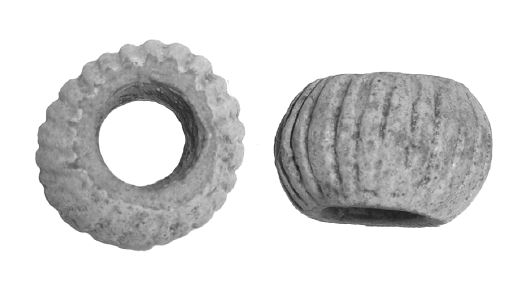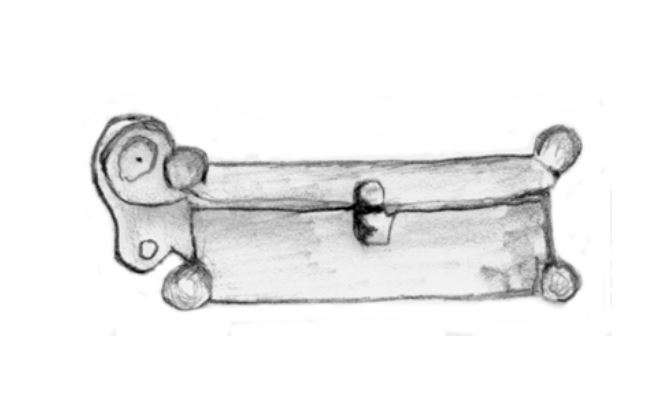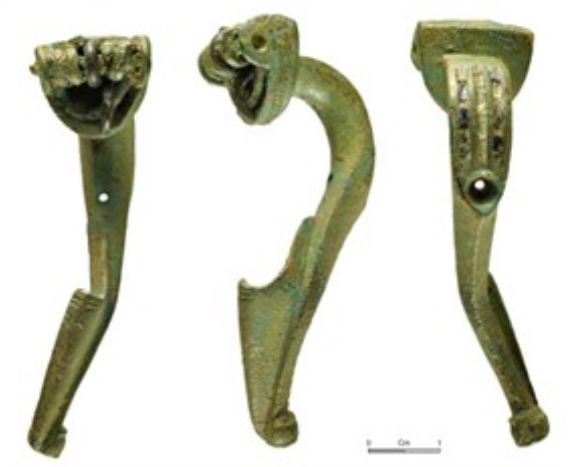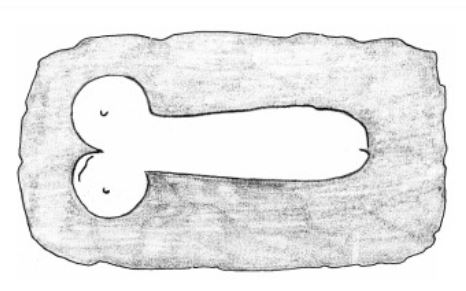Datasheets from Roman Finds Group
We have published a number of datasheets that are available to our members. The list of these downloadable PDF documents is below. Members who have logged in to the site may download them from their account.

Datasheet 1. Engraved Gemstones: A Guide for the Small Finds Specialist by Martin Henig
Extract from the datasheet:
“This datasheet is not intended to be yet another general chapter on Roman engraved gems of which there are several by myself as well as by other writers on glyptics. It is aimed very deliberately at the rather select constituency among archaeologists who are fascinated by material culture, especially small finds…”
Datasheet 2. Jet, Shale and Other Allied Materials by Lindsay Allason-Jones
Extract from the datasheet:
“The term jet has been used over the years to refer to any material that is black and can take a shine. This has included true jet, shale, coals, and asphalt. It has, however, become increasingly important that artefacts made from these different materials are
accurately identified in order to facilitate their long-term conservation and for their significance for Roman Britain to be correctly assessed.”
Datasheet 3. Roman Beads by Barbara Birley
Extract from the datasheet:
“Beads are technically small objects, perforated with a hole for stringing or attaching. They can be made from a variety of materials including gold, silver, precious or semi-precious stone, glass, shells, seed or bone. Their function in the past, as it is today, was largely decorative. Beads are commonly found on archaeological sites and can be identified by their material, colour, shape and size.”
Datasheet 4. Roman Seal Boxes by Colin Andrews
Extract from the datasheet:
“Seal-boxes are small, hinged, copper alloy boxes. The primary constituent parts are a base with a centrally placed arrangement of 3 – 5 holes, usually about 1mm in diameter, and a lid; both parts are cast (Fig 1). They are quite small ranging in size from 2 to 5 cm. The basic shapes are circular, leaf or piriform, square and lozenge, but there are many significant variations within these basic shape groups. In addition there are also some rarer shapes which fit none of these categories. In other parts of the empire some examples are known made from bone and even ivory (Derks & Roymans 2002, 91 n.23). The lids are often decorated, using a range of techniques, but in Britain enamel decoration is the most common…”
Datasheet 5. The Wirral Brooch: a Regional Romano-British Brooch Type by Frances McIntosh
Extract from the datasheet:
“The Wirral brooch is a second-century enamelled bow brooch. It was identified by Philpott in 1999 as a distinct regional type of Romano-British brooch because the core distribution area was defined as the Wirral peninsula, Cheshire and north-east Wales (Philpott 1999). Since then many more brooches of this type have been found and an in-depth study of them has been carried out (McIntosh 2014). This datasheet aims to help in the identification of these brooches when found on sites in the future.”
Datasheet 6. Pipeclay Figurines by Matthew Fittock
Extract from the datasheet:
“Pipeclay figurines are relatively small terracotta statuettes that range in size but are usually between 50-200mm in height. They are made from a pure and malleable type of clay containing very little chalk that turns a yellowish-white colour when fired due to a similarly low iron con-tent (Rouvier-Jeanlin 1975, 95; Higgins 1976, 105). In terms of form, pipeclay figurines mainly depict deities, animals and humans, but shrines (aediculae) and other miscellane-ous shapes such as eggs and bales of wool were occasionally produced as well. Alt-hough common and apparently relatively low in value, these objects were an integral part of daily religious life for the people liv-ing in Britain and Gaul during the Roman period. Prior to this datasheet Colin Wallace usefully summarised the existing literature on the subject in the Roman Finds Group newsletter, volume 10 (1995).”
Datasheet 7. Spindle Whorls by Marta Alberti
Extract from the datasheet:
“Spindle whorls are small and portable ob-jects, perforated in the centre in order to be inserted on a spindle rod and thus form a complete spindle. A spindle is a composite tool which has been employed since prehis-tory to transform rough fibres into spun yarn. The yarn would have then been used as material to weave, stitch and sew a wide range of textiles, from rags to complex gar-ments. To use a spindle, a spinner would have held the rod in one hand, with the whorl positioned at the top, at the bottom or in the middle. In the other hand, the spinner would have held the prepared fi-bres, which could be of animal or vegetal origin…”
Datasheet 8. Weighing Instruments by Philip Smither
Extract from datasheet:
“The category of Roman weighing instru-ments is made up of several different objects. There are the weighing scales themselves, which come in three basic forms; equal balances, steelyards, and dual balances. There are also the weights, of which there are pan weights and hanging weights; each type of weight is associated with a different type of instrument; pan weights with equal and dual balances, and hanging weights with steelyards and dual balances. Weighing instruments are found on all types of sites and are identifiable by elements of their morphology. This category of objects has been largely overlooked in Roman finds studies. Howev-er, there exists two typologies for steelyards (Grönke and Weinlich, 1992; Franken, 1993). For the purposes of creating a typology which would include all types of instrument, Grönke and Weinlich was found to be more suitable.”
Datasheet 9: Romano-British glass bangles by Tatiana Ivleva
Extract from datasheet:
Glass bangles are seamless ring-shaped adornments made of coloured glass (Fig 1). They are distinct artefacts that occur in Britain during the mid-first – latesecond centuries AD. While the manufacture of glass bangles began in Late Iron Age continental Europe, the craft abruptly disappeared from the continent in the early first century AD, at the time of the Roman conquest of northwest Europe (the main published continental corpora are Haevernick 1960; Gebhard 1989; Wagner 2006; Roymans and Verniers 2013). However, bangles re-appeared in Roman Britain possibly as a result of Roman invasion in AD 43.
Datasheet 10: Stone-carved Phalli: A typology by Rob Collins
Extract from Datasheet:
The carving of a phallus into or from stone is a ubiquitous practice in the Roman Empire, the significance and inter-pretation of which is more commonly understood as apo-tropaic rather than erotic (Johns 1982). However, little attention has been given to these carvings in terms of detailed execution within broader practice, and contextual analysis is often limited to individual examples (though see Parker 2017). A recent study of stone-carved phalli from Hadrian’s Wall (Collins, in press) catalogued exam-ples from the World Heritage Site (WHS) to examine phalli in reference to their employment and meaning rel-ative to the frontier monument. During the course of this research, it became apparent that there was diversity in morphology between individual phalli, but which was also replicated fairly regularly, and that the corpus would benefit from a typological approach. Full interpretation of the corpus can be found elsewhere, while this datasheet is intended to provide an overview of the typology and methods behind full typological attribution.
Datasheet 11: Portable phallic objects by Adam Parker
Extract from the datasheet:
“Disembodied phalli, on pendants or ï¬nger rings for ex-ample, are readily recognisable objects in the archaeo-logical record as one of the characteristic images of the Roman period. The phallus was used as an amulet to protect places and spaces, to protect people and encour-age their good health…”
Datasheet 12: Romano-British rotary querns and millstones by Ruth Shaffrey
Extract from the datasheet:
“Querns first appeared in the British Isles during the early Neolithic. The earliest examples were saddle querns. They consisted of a large lower stone with a flat or dished grinding surface that was used with a smaller flat or concave upper stone (a rubber). The rubber was moved in a back-and-forth motion across the saddle quern to crush grain. Rubbers were usually the same length or longer than the saddle querns were wide, so that when used, their two-handed operation caused wear across the whole of the grinding face. Some querns in northern Scotland were deeper and are known as trough querns…”
Datasheet 13. Roman gaming boards from Britain by Summer Courts and Tim Penn
Extract from the datasheet:
“When we think about games in the Roman world, many of us may ï¬rst conjure up vivid images of the arena; it is perhaps less likely that our immediate thoughts will be of board games. The study of Roman board games has until recently focussed on the reconstruction of gaming rules from textual references and surviving board de-signs (Austin 1934, 1935; Bell 1979; Murray 1951; Parlett 1999; Schädler 1994, 1995)…”
Datasheet 14: Amber by Glynn Davis
Extract from the datasheet:
Amber was a luxury material highly prized by the Romans, exploited throughout the period and across the Empire. It was valued for its aesthetic, medical and magical properties and was employed to create a range of objects both decorative and functional. This datasheet provides an overview of amber’s presence and use in the province of Britannia. It brings together all known decorative pieces from Britain, including several previously unpublished objects.
Datasheet 15: Earrings by Lindsay Allason-Jones
Extract from the datasheet:
Although still considered rare finds on Roman sites in Britain, earrings are to be found in a range of materials. Unfortunately, being mostly quite ephemeral items and easily damaged, it is easy to mistake them for finger-rings, hooks or pendants, particularly when damaged. In 1989 a research project led to the publication of a typology (Allason-Jones 1989) and, although many more ear-rings have been found in excavations and museum collections since, the basic typology has stood the test of time. In the following, references are given throughout to the 1989 publication, as few of the earrings are published accessibly.
Datasheet 16: Roman Mirrors in Britain by Susan Stewart
Extract from the datasheet:
The mirrors found in Britain that can be identified as being of Roman style and origin, whether imported prior to the arrival of Claudius’ forces or dating from the period of Roman conquest and occupation (AD 43-AD 410) are, in the main, much plainer and far less striking than the mirrors (with their elaborately decorated discs and handles) that form part of the native Celtic tradition. However, despite their relative lack of attractiveness, Roman mirrors were, and are, of no less importance.













